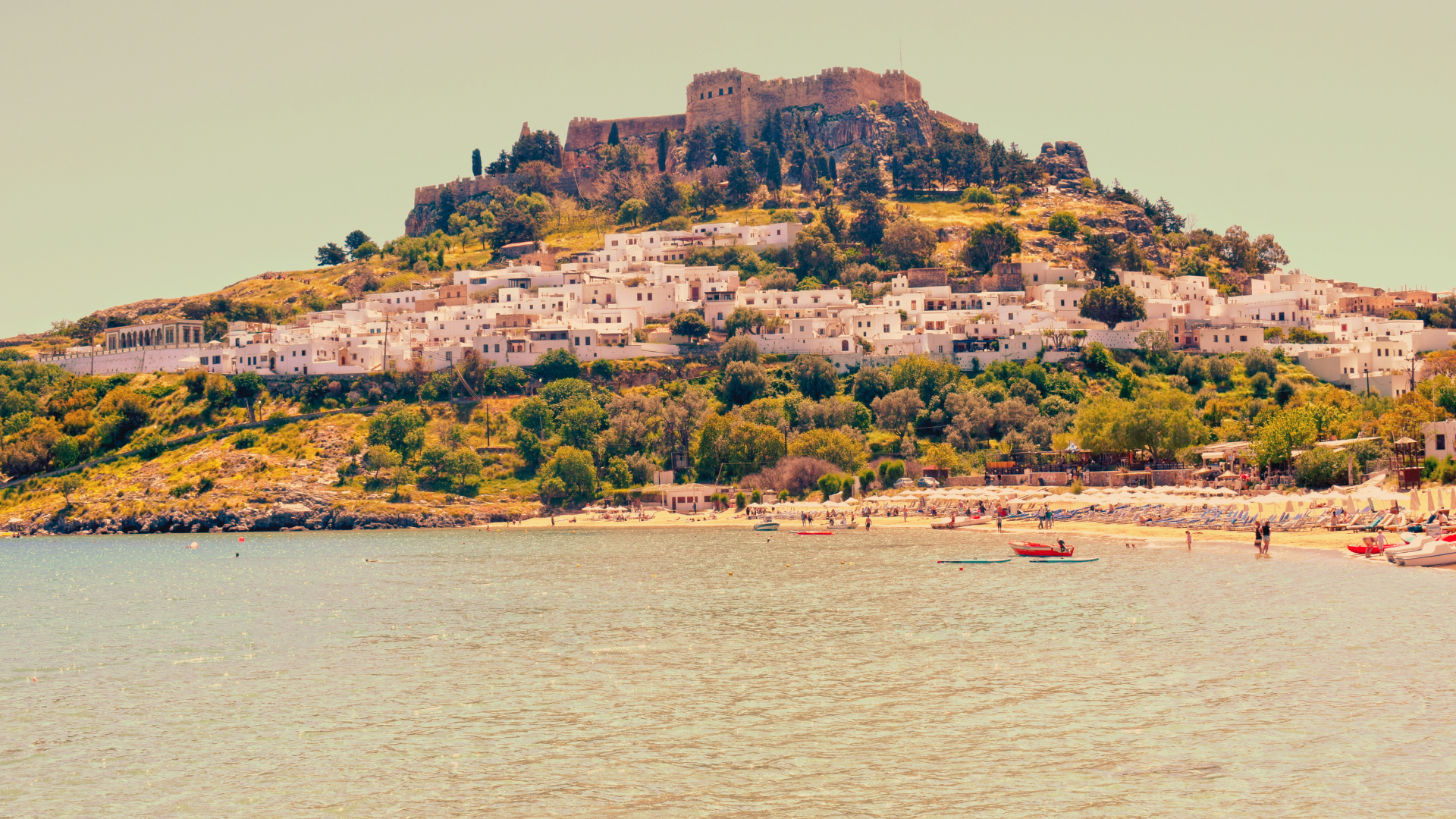
Surrender to the magic of Lindos
Perched like a white crown above the Aegean, Lindos is an ode to antiquity and serenity, a village whose every stone whispers tales of gods, knights, and sun-dappled wanderers. Approaching it, whether by the winding road from the north or the azure embrace of the sea, one feels a momentary hush—as if the island itself pauses to admire its jewel.
The First Glimpse
Lindos unfurls itself in layers. From the distance, the Acropolis, stoic and eternal, commands your gaze. Below it, the labyrinth of whitewashed houses spills down the hill, their cubic forms softening the rugged terrain. At their feet, the bays cradle turquoise waters, shimmering like liquid glass. This is a place where geography and history conspire to take your breath away.
The Acropolis: A Sentinel Through Time
To ascend to the Acropolis is to walk in the footsteps of countless pilgrims. The path is steep, flanked by bougainvillaea that spill magenta and crimson like an artist’s palette. The climb itself becomes a meditation, the modern world slipping away with each step.
At the summit, the ancient temple of Athena Lindia stands in solemn grace. Here, Doric columns frame views of an endless sea, and one cannot help but wonder if the goddess herself still lingers, drawn to the beauty of her dominion. Nearby, the remnants of a Byzantine chapel and the medieval fortress built by the Knights of St. John speak to the layers of history that have shaped this sacred site.
The Village: A Labyrinth of Light and Shadow
Beneath the Acropolis, the village of Lindos invites exploration. Its narrow, cobblestoned streets are an intricate maze where each turn reveals a surprise: a hidden courtyard draped in jasmine, a fragment of ancient mosaic beneath your feet, or a doorway painted with the cerulean hues of the Aegean.
The villagers, warm and unhurried, embody the spirit of the island. They speak of their home with a quiet pride, often over a cup of strong, bittersweet coffee. In their voices, one hears echoes of Homeric cadences—of hospitality as sacred as the sun that bathes their shores.
The Beaches: A Symphony of Blue
To rest by the sea is to succumb to the enchantment of Lindos. St. Paul’s Bay, a crescent of sand framed by cliffs, is a haven where time seems suspended. Legend has it that the apostle Paul landed here, seeking refuge from a storm—and indeed, the bay feels like a sanctuary.
Further afield, the main beach of Lindos stretches out, its golden sands caressed by waves. Here, the rhythm of the sea becomes a lullaby, the perfect counterpoint to the village’s vibrant hum.
Nightfall: A Candlelit Reverie
As the sun sinks below the horizon, Lindos transforms. The Acropolis, lit from below, glows like a beacon, its golden light mirrored in the wine-dark sea. The village streets come alive with a different kind of magic—lantern-lit terraces where laughter and music drift on the warm night air.
Dining in Lindos is a sensory delight. Grilled octopus, drizzled with olive oil, mingles with the scent of oregano. Plates of mezes arrive like gifts—each bite a revelation of the island’s bounty. The local wine, crisp and sun-kissed, is the perfect companion for these nocturnal feasts.
The Spirit of Lindos
To visit Lindos is to experience a place where past and present coexist in harmonious embrace. It is a village of contrasts: ancient yet vibrant, serene yet alive with possibility. Here, the rhythms of daily life slow, allowing one to linger, to savor, to dream.
In Lindos, you are not merely a visitor but a participant in its timeless story. And as you leave, you carry with you the imprint of its light, its warmth, and its ineffable charm—a memory as enduring as the stones of its Acropolis, standing watch over the sea.